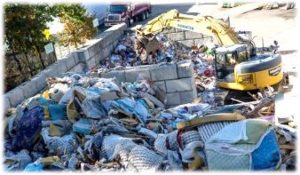
I am excited to announce that FOCUS Scientific Services Inc., has acquired the Microbiology Network Inc., a unique consulting and information sharing company focused on industrial microbiology. Founded in 1996 by Dr. Scott Sutton, MNI predates his involvement and eventual leadership of the non-profit Pharmaceutical Microbiology Forum, where he managed the eponymous PMFList, a crowd sourced microbiology solution provider known by almost every industrial microbiologist.
Scott was a mentor to me, as he was for hundreds of others who worked with him or read his works. In fact, I had the opportunity to collaborate with him on a few Microbiology Network Inc. projects shortly after New England Compounding Center changed the compounding pharmacy world, and reminded the world of the consequences of ignoring our advice. After Scott’s passing I continued working with his wife, Mary Ellen Sutton, and participated as a speaker at PMF meetings, sharing information on laboratory management and environmental monitoring.
The Microbiology Network is a perfect complement to FOCUS Laboratories. Like MNI, FOCUS is an information company and a collaborative solution provider. MNI is another tool allowing us to develop smart solutions to pharmaceutical and medical device’s microbiological challenges.
To that end we don’t intend to change much about the Microbiological Network. We will give the website a fresh new look, but we will keep the name and continue to host Scott’s content. We will post new material from subject matter experts, so please contact me if you have information you would like to share. We will continue to organize the kind of practical and focused seminars, webinars and training programs that MNI is known for. And on a tactical level, we will use the resources of our laboratories to offer hands-on training for those wanting to learn the fundamental techniques and principles of the QC Microbiology Laboratory.
This is a wonderful time for life sciences industries, an astounding variety of biotech wonders come through our laboratory doors every day. Yet at the same time we hear news of contaminated products and unsanitary manufacturing conditions all too often. There is a need for microbiological expertise of the kind that Microbiological Network and the consultants who supported it provide. And on a personal level, it is an honor for me to be trusted with Scott’s legacy, to be able to share his work and build on it with you, all towards our shared goal of bringing safe life-saving products to consumers who need them.
Anthony Grilli
CEO
FOCUS Scientific Services Inc.





